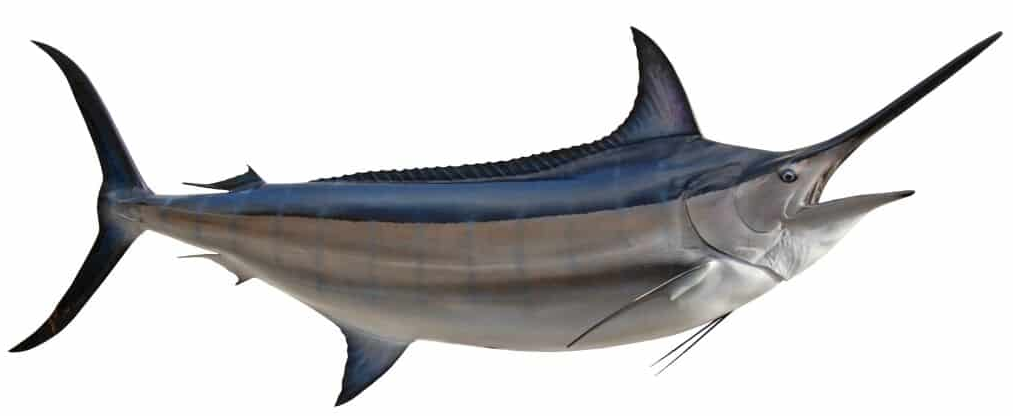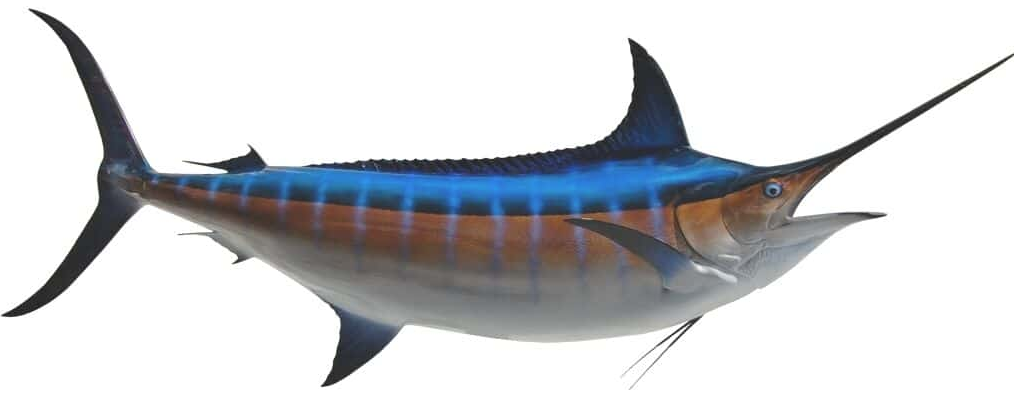For the passionate angler, nothing quite compares to the thrill of fishing for black and blue marlins. These majestic species, notorious for their size, speed, and tenacity, offer an unparalleled angling adventure that spans the globe’s warm oceanic regions. Here’s everything you need to know about these regal sea creatures, revealing the mystique that keeps us pursuing their trail.
Distinguishing the Titans: Black vs. Blue Marlins
Discerning between black and blue marlins is a critical first step in your angling journey. The blue marlin (Makaira nigricans) has a rounded dorsal fin that’s proportionally shorter than its body height. Conversely, the black marlin (Istiompax indica) features a flat, pointed dorsal fin taller than the body’s depth, giving it a distinct silhouette.
Behemoths of the Deep: Size and Weight
When it comes to marlin fishing, size truly matters. Blue marlins, though sleek, are swift swimmers, capable of reaching speeds up to 50 miles per hour. The females of this species significantly outsize the males, who typically weigh between 200-300 pounds. The females, however, can grow to an impressive 1,402 pounds.
Likewise, black marlins are renowned for their heft, with females outgrowing their male counterparts, reaching lengths of up to 15.4 feet and weights up to 1,560 pounds. Like their blue kin, black marlins are also fast, hitting speeds up to 82 km/h (50 mph), a fascinating contradiction considering their size.
#Marlins and the Miracle of Life
Understanding marlins’ longevity and reproduction habits can provide insights into their seasonal patterns. Blue marlins live approximately 27 years, with spawning typically taking place during the summer and fall. Astoundingly, females can release several million eggs each time, making their reproductive phase a truly remarkable event.
Similar to blue marlins, black marlins also live up to 28 years. Their spawning, primarily occurring in the Coral Sea off Queensland’s coast, takes place between October and December. In a single season, female black marlins can release up to 12 million eggs.
Diet: Predators of the Sea
Small fish and cephalopods form the primary diet of both black and blue marlins. Favored prey includes mackerel, tuna, cuttlefish, and squid. The marlin’s impressive speed and agility make them formidable hunters, a trait that only adds to their mystique.
#Marlins on the Move: Migration Patterns
Blue marlins are global jet-setters, residing in the Atlantic, Indian, and Pacific Oceans. They migrate towards the equator during colder months, often following warm oceanic currents.
Meanwhile, black marlins, primarily found in the tropical Indo-Pacific waters, undertake long migrations, particularly from Central America’s coasts to the western Pacific Ocean.
#Protecting Our Giants: Conservation Status
The thrill of angling for marlins must be tempered with the knowledge of their conservation status. Blue marlins are listed as “vulnerable” on the IUCN Red List, while black marlins are considered “data deficient,” indicating the need for more research to assess their status.
Overfishing poses a significant threat to these spectacular creatures. As anglers, we must encourage and practice sustainable fishing to ensure that future generations can also experience the thrill of landing a ‘grander.’
In the world of sportfishing, black and blue marlins stand as titans — a testament to the ocean’s wonders and mysteries. Their allure lies not only in their size and fight but also in their ecological significance. As we continue our pursuit of these awe-inspiring creatures, we must remember our role in safeguarding their habitats and ensuring their survival for generations to come.
The Grandeur of Cabo San Lucas Marlin Fishing
Cabo San Lucas is renowned for its marlin fishing, home to numerous high-stakes fishing tournaments, including the Bisbee’s Black and Blue tournament. The pursuit of these majestic creatures can be simultaneously exhilarating and monotonous, characterized by hours of patient trolling, punctuated by moments of chaotic thrill when a marlin bites. Yet, this pursuit of the ‘grander’ – a marlin weighing over 1,000 lb – makes the experience undeniably rewarding.
Whether you’re a seasoned angler or a novice, the thrill of marlin fishing in Cabo San Lucas is a must-try. You can book your unforgettable marlin fishing experience with us Blue marlin in Cabo San Lucas, or reach out to us via email at tagsportfishing@gmail.com.
Join the ranks of the ‘big boys’ of competitive saltwater fishing. Embrace the thrill, the wait, and the ultimate reward of catching a black or blue marlin. And remember, as the saying goes, “marlin fishing is hours of boredom interrupted by moments of sheer terror.”
Don’t forget to subscribe to our Youtube channel for the latest updates on what, where, and how we fish.
Fish on, anglers!


